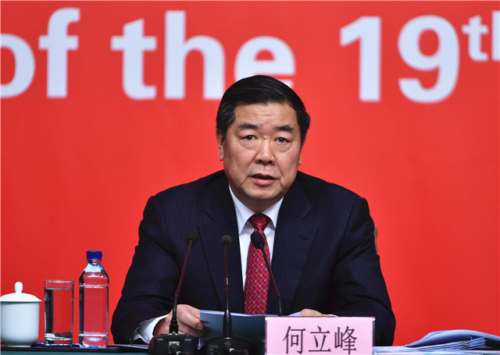Uneasy smiles between China and India at G20 meeting
The Chinese and Indian foreign ministers met, in the latest awkward dance move between the two Asian giants who have an unresolved border dispute and different reasons for saying nothing about the Russian invasion of Ukraine.

Chinese Foreign Minister Qín Gāng 秦刚 met with his Indian counterpart Subrahmanyam Jaishankar today on the sidelines of the Group of 20 (G20) summit in New Delhi, after years of strained bilateral relations over their disputed border and the war in Ukraine.
“Our discussions were focused on addressing current challenges to the bilateral relationship, especially peace and tranquility in the border areas,” Jaishankar said.
“This is an important meeting because there has been no high-level bilateral engagement between the two sides since the 20th Party Congress. Indian Prime Minister Narendra Modi and Chinese President Xí Jìnpíng 习近平 have had no formal bilateral discussions since late 2019,” Manoj Kewalramani, chairperson of the Indo-Pacific Studies Programme at the Takshashila Institution, told The China Project.
Since becoming the new foreign minister in December 2022, Qin Gang has been on a spate of diplomatic visits around the world. His overseas trips are part of a broader effort by China to shore up its position as it steps back onto the global stage after three years of COVID zero — and to begin Chinese President Xí Jìnpíng’s 习近平 third term on a strong foot.
“Foreign Minister Qin Gang has reached out to many of his counterparts from around the world since taking charge, but there has been no outreach to India. So in that sense, bilateral dialogue between the two sides is important,” Kewalramani told The China Project. “But one should not be expecting any significant outcomes in terms of a thaw in bilateral ties. I presume the boundary issue, the G20 agenda, and the SCO summit later this year will be part of the discussions.”
China and India are talking face-to-face, but no major ease on the border dispute
Communication between Beijing and New Delhi has come to a near standstill ever since the fatal 2020 clash between Chinese and Indian troops along their contested Himalayan border, also known as the Line of Actual Control (LAC), in the Galwan Valley.
While the meeting signals a slight thaw, any significant ease in tensions appears unlikely. India has stated that its relationship with China cannot be normal unless there is peace along the undemarcated 2,167-mile border.
“Several friction points continue to remain unresolved in eastern Ladakh. But beyond that, volatility on the border is likely to sustain, given changes in infrastructure and force posture on both sides,” Kewalramani told The China Project.
Even 17 rounds of talks between Indian and Chinese military commanders have failed to ease the long-running standoff over the rugged, mountainous terrain. China’s perceived reluctance to restore the status quo has led to a buildup of infrastructure on both sides of the LAC. While China and India agreed to withdraw troops from key locations in February 2022, Indian army chief Manoj Pande said last month that China has slightly increased its troop count in the eastern sector of the border.
But the sidelines meeting at G20 does mark the latest return to in-person communications between top-ranking Chinese and Indian officials. Also last month, the 26th meeting of the Working Mechanism for Consultation and Coordination on India-China Border Affairs convened in Beijing to discuss disengagement and “restore normalcy” in relations, the first such talks held in-person since the start of the pandemic.
For India, neutrality on Ukraine means an eye on China
Meanwhile, the G20 meeting ended with no consensus on the Ukraine war. Only China and India refused to agree on a statement that demanded Moscow to withdraw from its war in Ukraine.
“In the Russia-Ukraine war, both sides are concerned about escalation, disruption, and the costs that the conflict imposes on them, and there is room to work together in that regard. But there are significant differences between India and China’s positions,” Kewalramani told The China Project. “This is evident in the engagement that both sides have had with both Russia and Ukraine. Likewise, Chinese official agencies and discourse have been critical of NATO as bearing the primary responsibility for the conflict. India has not done that.”
Similar to China, India has refrained from directly criticizing Russia, and its neutral position on the Ukraine war has drawn criticism from many countries in the West. India has struggled to balance its deepening relationship with the United States with its allegiances to Russia, ingrained since the Cold War, and its deep-rooted ideological affinities for the former Soviet Union. Moscow also supplies New Delhi with nearly 60% of its defense equipment.
But India’s humiliating defeat to China in the 1962 Sino-Indian War fundamentally shaped its foreign policy, and has largely informed its position on the war in Ukraine. As Beijing continues to deploy more troops and build more structures along the border, New Delhi has been cautious not to alienate any of its allies in case a new conflict begins.
“For India, the Ukraine crisis [is] not about world order. It’s more about…how this will matter for China’s rise geopolitically, and particularly how it’ll matter for India’s territories on the border,” Manjari Chatterjee Miller, senior fellow for India, Pakistan, and South Asia at the Council on Foreign Relations, told The China Project last April.
“Structurally, competition will remain the core characteristic of the relationship. The strategic underpinning of this is the future of the Asian order. The question for Beijing is whether it is willing to co-exist in a multipolar Asia,” Kewalramani told The China Project.






